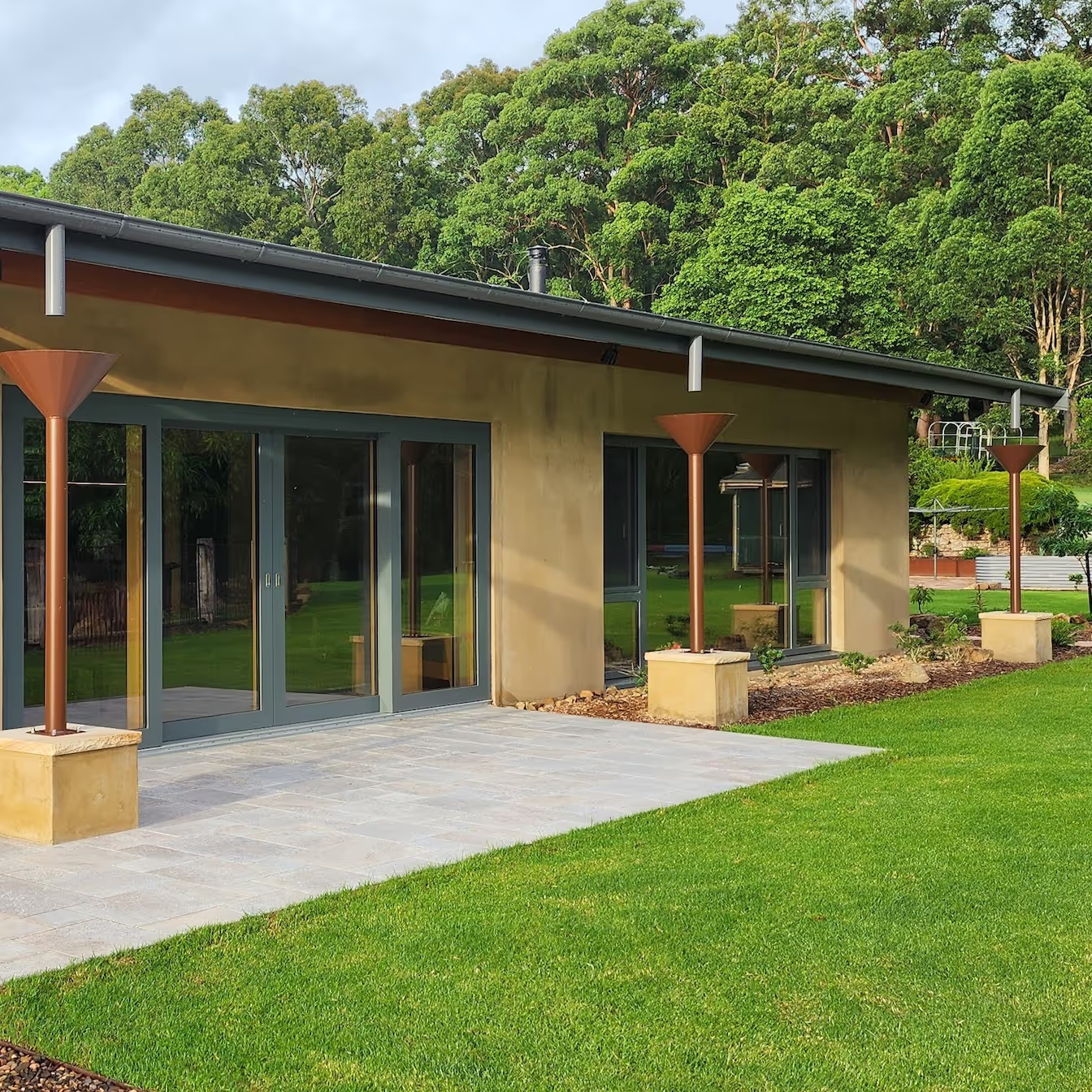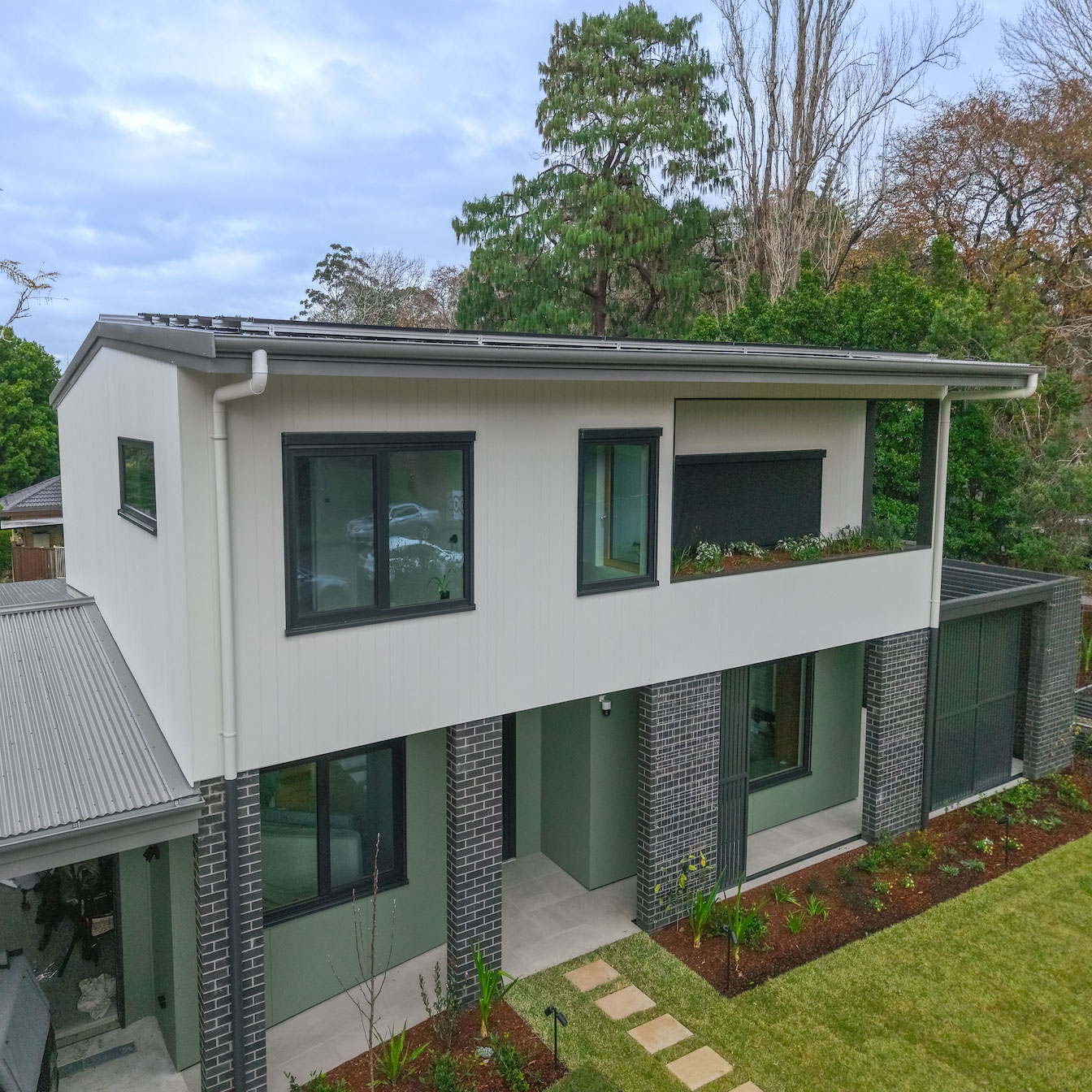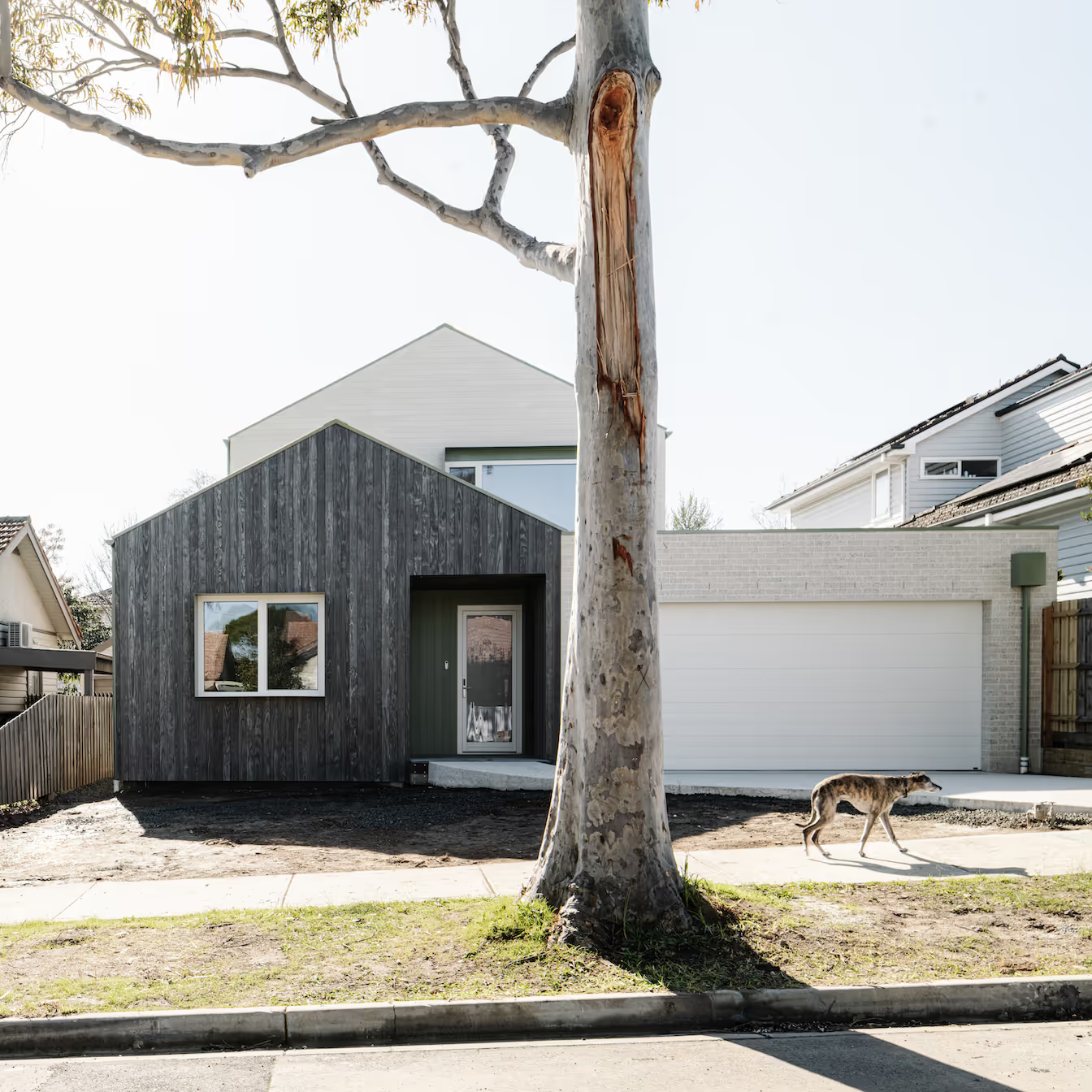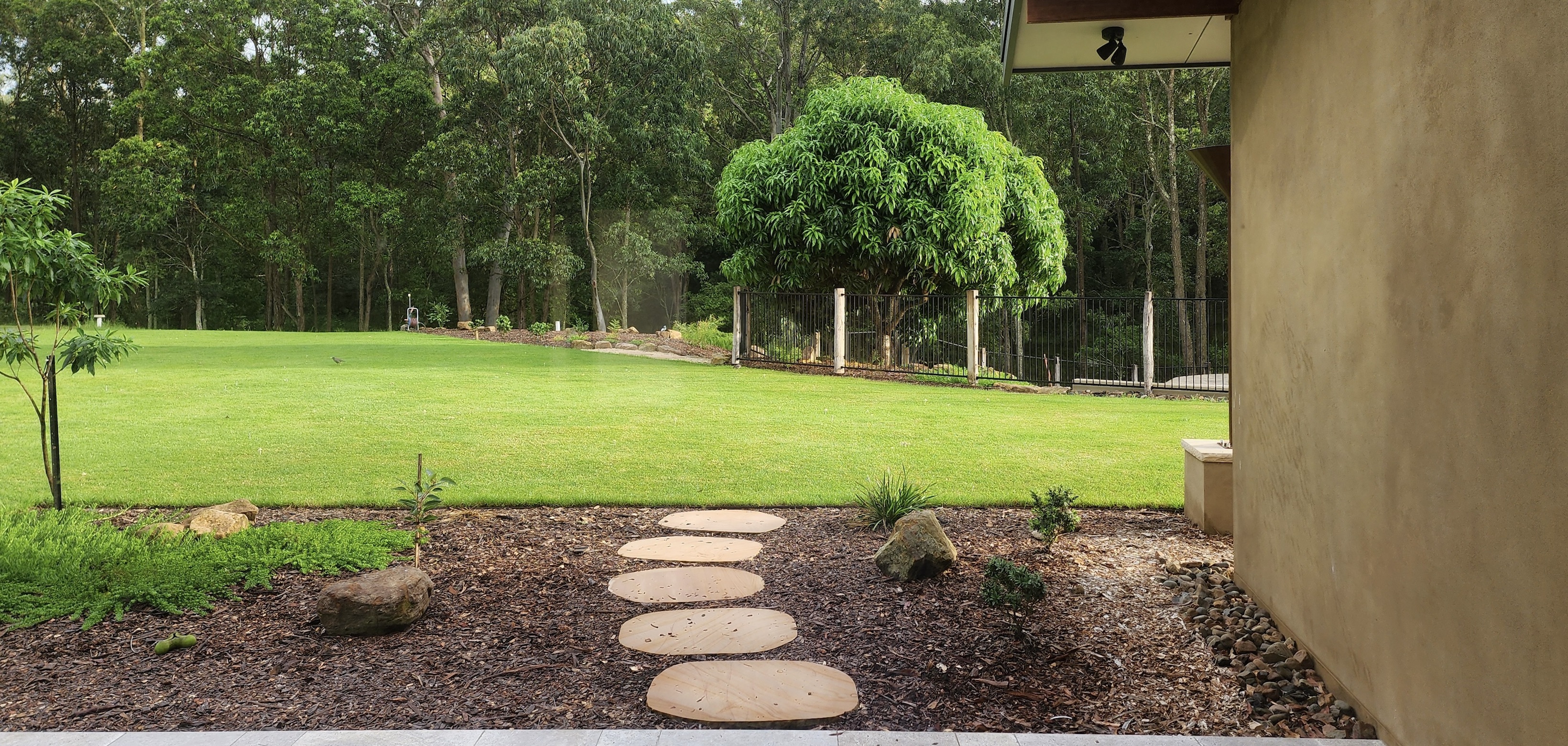
The owners of this made-to-measure expansive home in the Hunter Valley had nursed a dream to live in a passive solar home since the 70s. It was a long wait but their forever home is even better than they hoped.
The Hunter region climate varies with altitude but it’s humid and hot in summer and winters are cold. However this home’s materials and design ensure a consistent 20C temperature inside all year round with minimal active heating or cooling, much to the owners’ delight. Air-conditioning is seldom used for cooling but provides necessary dehumidification in summer. The wood-burning stove was lit less than a dozen times over the home’s first winter.
This comfort and energy efficiency is achieved by the use of tried-and-tested passive solar design techniques: orientation, shading, cross-ventilation and thermal mass. This house is notable for its beautiful and effective use of hemp as a wall infill. This was built on site using shuttered formwork and timber framing. The hemp has been rendered on the outside while inside a clear sealer allows the beauty and texture of the hemp to shine.
This project was designed by Dick Clarke, Envirotecture’s founding director. Dick is well known for his passionate advocacy of hemp as a building material. In this comprehensive article in Sanctuary 2018, he wrote of hemp’s many benefits, all reasons why “so many of us are so enthusiastic. Hemp is thermally efficient–it controls heat flows through the wall. It is breathable–it moderates internal humidity. It is non-flammable–it is safe and Code-compliant in cooking spaces and bushfire zones. It is long-lasting–provided the detailing and construction quality is good and maintenance is carried out (as with any building), hemp will last hundreds of years.”
This project dates back to 2018. Envirotecture would now use Passivhaus Planning Package software (PHPP) to energy model the design, even if the project wasn’t seeking Passivhaus certification. PHPP accurately predicts energy use and people’s comfort and helps architects get the best performance for the client’s budget.
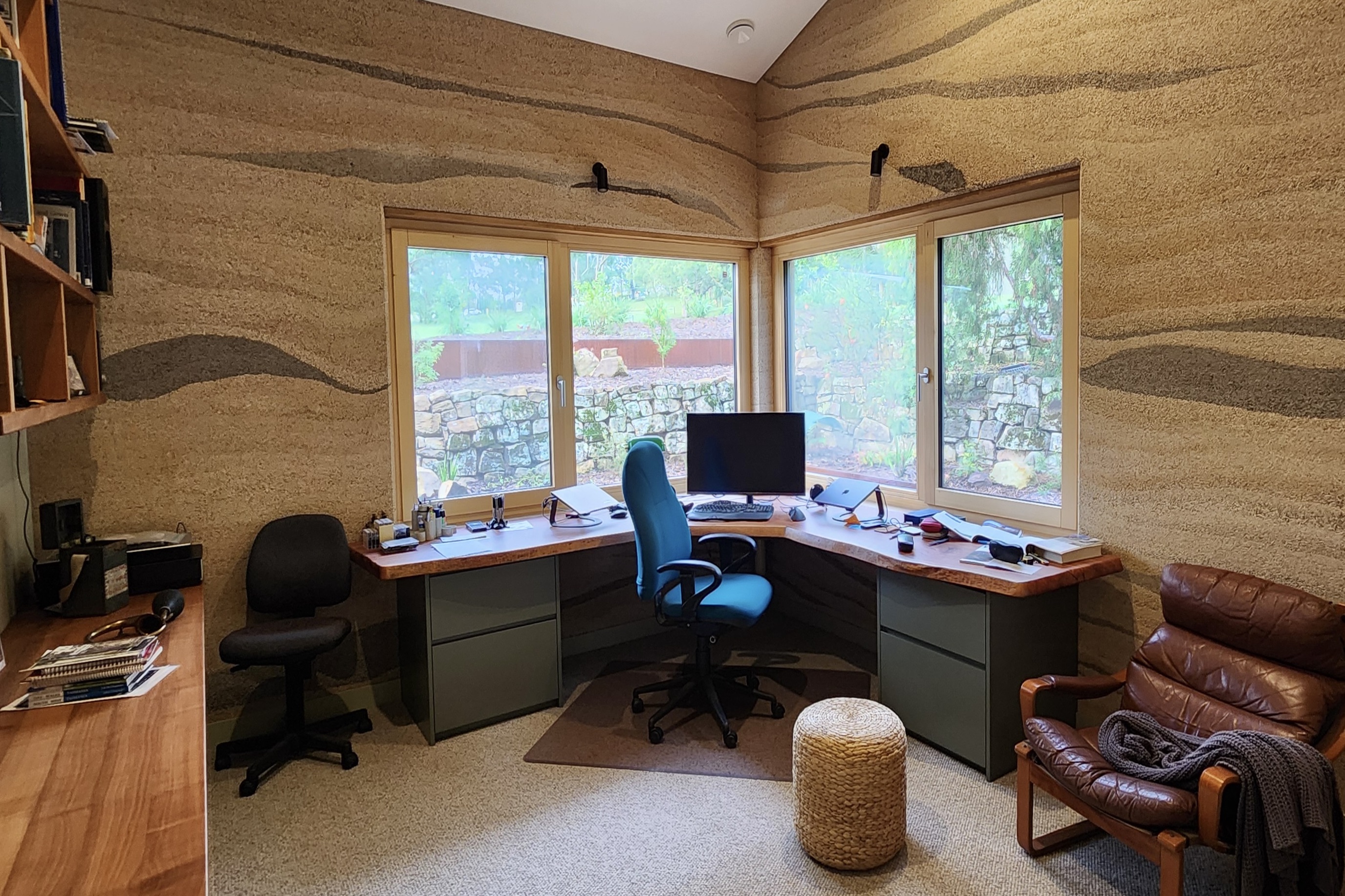




















Awards
Awards
Media


